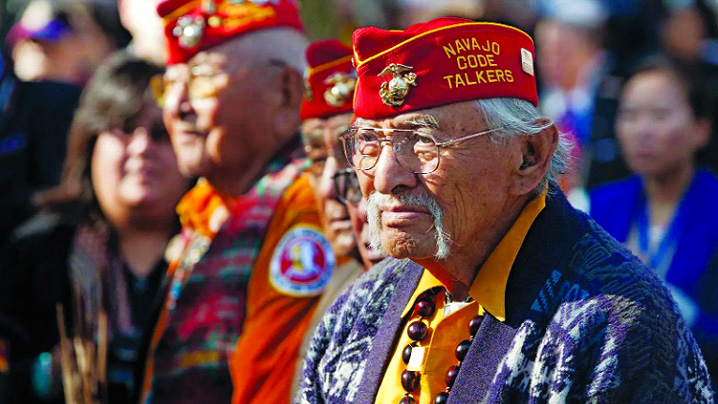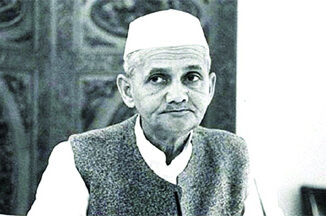
Veterans Day, observed on November 11, honors the brave men and women who have served in the United States Armed Forces. It is a solemn reminder of their sacrifice, courage, and enduring commitment to safeguarding the nation’s freedom and values.
Each year on 11 November, the United States pauses for a moment of deep gratitude. In the hush between autumn’s fading colors and winter’s first chill, Veterans Day arrives as a national reminder that the freedoms enjoyed by millions have been shaped, safeguarded, and defended by those who wore the uniform. It is more than a ceremonial date; it is a collective act of remembrance, respect, and recommitment to those who have served in the U.S. Armed Forces.
Origins Rooted in the End of a Global Storm
The story of Veterans Day begins in the closing hours of World War I, once called “the war to end all wars.” On November 11, 1918, at the 11th hour of the 11th day of the 11th month, the Armistice between the Allied nations and Germany came into effect, silencing the guns across Europe.
In 1919, President Woodrow Wilson proclaimed the first Armistice Day, dedicated to peace and to honoring those who fought in the Great War. After World War II and the Korean War, the day took on a broader purpose. In 1954, Congress officially renamed it Veterans Day, transforming it from a World War I commemoration into a nationwide expression of respect for all American veterans – past, present, and future.
To understand how Veterans Day came into existence, we must begin long before the holiday itself – in the turbulent years that led to World War I. By the early 20th century, Europe was a powder keg of military rivalries, expanding empires, rigid alliances, and rising nationalism. The assassination of Archduke Franz Ferdinand in June 1914 triggered a chain reaction that plunged the world into its first truly global war. Over the next four years, more than 30 nations were drawn into the conflict, mobilizing tens of millions of soldiers and introducing catastrophic new technologies like machine guns, tanks, poison gas, and aerial bombing.
The Armistice of 1918: The Moment the Guns Fell Silent
After four years of destruction, exhaustion and collapse spread across Europe. Germany’s economy and military were failing, its allies were defeated, and domestic unrest was rising. In the early morning of November 11, 1918, representatives from Germany and the Allied Powers met in a railway carriage in France‘s Compiègne Forest to sign an armistice agreement.
The truce officially took effect at 11:00 a.m. – the 11th hour of the 11th day of the 11th month. The symbolism was deliberate, marking a moment of solemn symmetry and hope for a peaceful future. Across the Western Front, soldiers who had spent years in mud-filled trenches stood in stunned silence as the gunfire ceased. That singular moment would become the foundation of the holiday we know today.
The Birth of Armistice Day in the United States
One year later, in 1919, President Woodrow Wilson declared the first Armistice Day, calling it a day filled with “solemn pride in the heroism” of those who served in World War I. The observance included parades, church services, public gatherings, and moments of silence at 11 a.m. The idea resonated deeply with a nation that had seen more than 116,000 of its service members perish in the war.
In 1926, Congress passed a resolution urging states to observe November 11 with appropriate ceremonies. In 1938, the day officially became a national holiday dedicated to promoting peace and honouring World War I veterans. At this stage, Armistice Day was a tribute to the hope that the Great War would truly be the “war to end all wars.”
The Transformation After World War II and Korea
However, as history unfolded, that hope faded. The outbreak of World War II – followed by the Korean War – exposed the fragility of global peace and significantly expanded the number of Americans who had served in uniform. More than 16 million Americans fought in World War II, and another 1.8 million served in Korea. Veterans organizations and community leaders began advocating that November 11 should honor all veterans, not just those of the First World War.
A key figure in this movement was Raymond Weeks, a World War II veteran from Alabama, who in 1947 organized the first “Veterans Day” celebration and pushed leaders in Washington to adopt a broader observance. His idea attracted support from General Dwight D. Eisenhower, who later became President.
The Official Change to “Veterans Day” in 1954
The transformation became law in June 1954, when President Eisenhower signed a bill replacing the word “Armistice” with “Veterans.” The newly named Veterans Day recognized all American veterans – those of past conflicts, current service members, and future generations who would defend the nation. This marked a shift from a day focused on peace to a day focused on service, sacrifice, and national gratitude.
The Forgotten Chapter: The Attempt to Move the Holiday
In 1968, Congress passed the Uniform Monday Holiday Act, moving Veterans Day to the fourth Monday in October to create a long weekend. The change took effect in 1971 – and was immediately met with widespread public opposition.
Veterans groups insisted that the historic significance of November 11 should never be detached from the Armistice that ended World War I. Some states simply ignored the federal change and continued to celebrate on November 11. The discontent grew so strong that Congress reversed the decision. In 1975, President Gerald Ford restored November 11 as the official date. Since 1978, Veterans Day has been celebrated on this date every year.
Key Figures Who Shaped Veterans Day
The evolution of Armistice Day into Veterans Day involved several influential individuals:
President Woodrow Wilson
He established the first Armistice Day observance and framed it as a moral tribute to peace.
General John J. Pershing
Commander of the American Expeditionary Forces, Pershing became a revered advocate for honoring WWI soldiers.
Raymond Weeks (The
“Father of Veterans Day”)
A World War II veteran, Weeks proposed expanding Armistice Day into a day for all veterans. He organized the first Veterans Day celebration in 1947, gaining the backing of national leaders.
President Dwight D. Eisenhower
As a former Supreme Allied Commander during World War II, Eisenhower strongly supported Weeks’ idea. In 1954, he signed the law officially renaming the holiday Veterans Day.
The Global Context: How Other Nations Observe the Armistice
Although Veterans Day is unique to the United States, the date carries global significance. Many other countries observe November 11 as Remembrance Day or Armistice Day.
– United Kingdom, Canada, Australia, and New Zealand commemorate Remembrance Day with two minutes of silence and the wearing of red poppies.
– France and Belgium observe Armistice Day with ceremonies at historic World War I battlefields like Verdun, the Somme, and Ypres.
While these nations focus primarily on honouring the war dead, the U.S. version distinguishes itself by honouring all veterans, living or deceased.
The Tomb of the Unknown Soldier: A Symbol of Unspoken Sacrifice
A central part of Veterans Day history is the Tomb of the Unknown Soldier, established in 1921 with the burial of an unidentified World War I serviceman at Arlington National Cemetery. The tomb symbolizes all missing and unidentified American service members from every conflict. The site became the national focal point of Veterans Day ceremonies. Each November 11, a presidential wreath-laying ceremony is held here, reinforcing the nation’s commitment to honouring those whose identities remain forever unknown.
Why the History of Veterans Day Still Matters Today
Understanding the history of Veterans Day reveals its deeper purpose. It is not merely a public holiday or a patriotic ritual – it is a symbolic bridge between generations. It links the soldiers in the trenches of 1918 to those who patrol oceans, deserts, cyber networks, and distant skies today. It reminds the nation that the freedoms enjoyed in daily life were safeguarded by those who stood ready to defend them.
The day’s origins in the Armistice of 1918 give it a universal message: that peace is precious, that service demands remembrance, and that the cost of freedom must never be forgotten.
The Symbolism of November 11: Numbers and Meaning
The triple repetition – 11/11 at 11 a.m. – is not accidental.
– 11 symbolizes harmony in numerology: balance between conflict and resolution.
– The symmetry of these numbers commemorates the universal desire for peace after global catastrophe.
– The moment also marks the beginning of modern international diplomacy and the hope of collective security.
How Veterans Day Helped
Shape Veterans’ Rights in America
Throughout the 20th century, Veterans Day became closely linked with the evolution of benefits and support systems for veterans.
Major developments include:
– The 1944 G.I. Bill, enabling education, home loans, and economic opportunity for millions of WWII veterans.
– Expansion of VA hospitals in the 1950s and 1960s.
– Recognition of PTSD after the Vietnam War, leading to increased mental health services.
– Support programs for post-9/11 veterans, including improved healthcare, disability benefits, and reintegration initiatives.
Veterans Day helped highlight the need for these reforms, pushing lawmakers to strengthen veterans’ welfare.





Be the first to comment